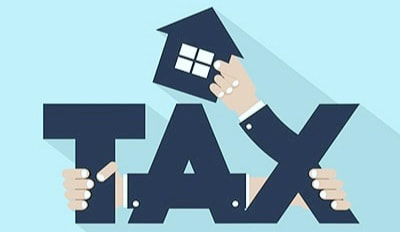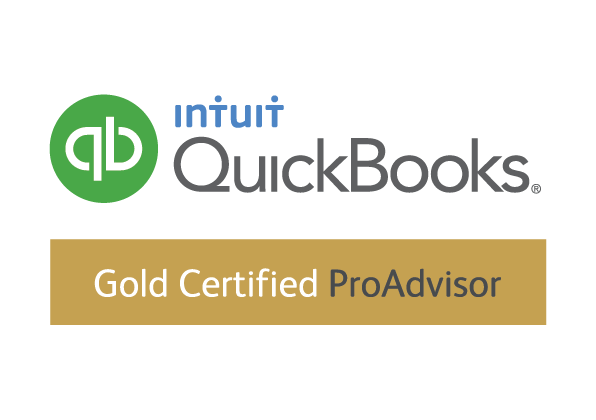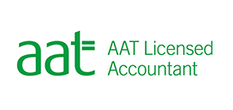|
Introduction UK residential property has been subject to many changes when it comes to tax in the recent years, immediately springing to mind is the removal of the wear and tear allowance, the 3% additional Stamp Duty Land Tax (SDLT) charge, the 8% surcharge on Capital Gains Tax (CGT), provisions of ATED and CGT being payable within 30 days. Some of these changes only affect individuals, while some only affect corporate businesses and some affect both. Section 24 or ‘finance cost restriction’, however has been the most worrying change for private residential landlords, especially where highly geared portfolios could suffer tax charges in excess of their profits. Currently, as there are no restrictions on finance cost charges to limited companies, incorporation has become very attractive to landlords, however there is more to consider before opting for this option. What is Incorporation? It is simply the transfer of a business owned by the individual or a partnership to a limited liability company structure. Where the business is looking to utilise CGT incorporation relief (section 162, TCGA 1992) the company pays the transferor for the business by issuing new shares. The incorporation relief will roll the gain inherent in the properties at the time of the transfer into the base cost of the shares. Thus, the gain is only brought into charge if and when the shares are disposed of. For section 162, incorporation relief to apply the transferor must be an individual or a partnership (this could be general, limited or LLP partnership) and the transfer must be to a company in exchange for newly issued shares. Any other consideration other than shares that is paid to the transferor for example by creation of a loan account is chargeable to CGT. There is also a “going concern” requirement for the business, which is likely to be met by most property rental businesses. What is a business? The word “business “is not defined by statute and therefore has often given rise to contention between HMRC and the taxpayer. Until a few years ago there was very little guidance or case law. The definition of business was considered in the Upper Tier Tribunal (UTT) in the case of Elizabeth Moyne Ramsey v HMRC (2013). The case facts: · Mrs Ramsey’s business consisted of a joint interest in a property which was divided into ten self-contained flats. · The property consisted of a communal area as well as a garden, car park and garages and substantial repair and maintenance was carried out on them. · Mrs Ramsey was involved and carried out some of the work personally. · Additional assistance was provided to an elderly tenant · Mrs Ramsey was carrying out preliminary work for the planned refurbishment and redevelopment of the property prior to the transfer of the property to a limited company. · Mrs Ramsey and her husband each spent 20 hours a week on the management of the property business and neither of them had any other source of income during the relevant period. The UTT decided that the level of activity was sufficient to deem the business as being beyond what is normally expected to be carried out by a mere passive investor, making the level of activity the main indicator whether a business exists and section162 incorporation relief is available or not. There are other aspects to incorporation that would need to be considered carefully such as Stamp Duty Land Tax (SDLT) before deciding to incorporate, however an aspect that we feel is often overlooked is the opportunity for landlords to restructure their business as this could result in running their portfolios more efficiently and even mitigate future Inheritance Tax (IHT). If you have any questions regarding incorporation, section 24, SDLT, IHT or restructuring your property business please don’t hesitate to contact us on info@intact-accounting.co.uk.
1 Comment
If you have paid the additional Stamp Duty Land Tax (SDLT) on the purchase of a dilapidated property you could be due a refund from HMRC. The government introduced SDLT surcharges on 1st April 2016 for individuals purchasing a second residential property, or when a residential property is purchased by a limited company. These measures were supposed to discourage individuals from purchasing additional residential properties and support the housing market; however tribunal decision in the case of P N Bewley Ltd V HMRC [2019] established that an SDLT surcharge is not payable where a property is not habitable at the time of purchase. Here is our quick and easy summary of the case; however, you can read the full tribunal decision here.
Outcome
If you want to claim a tax rebate or exemption on the above basis, HMRC are likely to want to see evidence in relation to the condition of the property. HMRC will want to see evidence of the properties condition prior to and at the time of the sale (transaction) to ensure that the property has not been damaged on purpose for tax avoidance purposes. If you are purchasing a dilapidated property, it is recommended to try to get as much evidence as possible, as close as possible to the date of the purchase and before any work has started. If you would like assistance with filing your SDLT return, claiming an SDLT rebate or exemption please contact us on info@intact-accounting.co.uk.
Previously we covered Stamp Duty Land Tax (SDLT) implications of transferring your property portfolio to a limited company; you can read that article here. However, transferring a property to a limited company has other implications apart from SDLT. Annual Tax on Enveloped Dwellings (ATED) Annual Tax on Enveloped Dwellings (ATED) is an annual charge that applies to a company that holds a dwelling valued over £500,000. The amount chargeable depends on the value of the property, for example, for a property valued between £1 million and up to £2 Million the annual charge would be £7,500 for the period of 1 April 2020 to 31 March 2021. There are number of reliefs available, especially where properties are purchased by the company to run a qualifying rental business, although ATED returns must still be filed annually. An initial late filing penalty of £100 will be charged by HMRC, which will increase over time incrementally similar to Self-assessment late filing penalties, if ATED returns are filed late. Relief will be denied if there is a non-qualifying occupation of the property during the company’s ownership of the property, for example if the property is occupied by an individual connected to the company. In our next post we will be discussing an SDLT scheme that was pitched to one of our senior advisors here at Intact Accounting and we can see his views on this scheme which promises to reduce SDLT payable. If you have any questions about how SDLT or ATED can affect your property business please contact us on info@intact-accounting.co.uk.
The SDLT impact on incorporation will depend on how the property is held. Transfer from an individual to a connected company This is where the property is held directly by the individual and it’s transferred to a connected limited company.
Where a company acquires a single interest dwelling valued over £500,000 unless it qualifies for a business purpose, higher 15% rate of SDLT will apply to the transaction, which is 15% on the entire value of the transaction. Relief is available for buy to let properties held in a company for investment purposes however should the company cease to hold the properties for this purpose within three tiers of the date of transfer then further SDLT may become due. Transfer from a partnership to a connected company Where a property portfolio is transferred form a partnership to a connected company any actual consideration for the transaction is disregarded and the consideration for the transaction will be calculated according to the sum of lower proportions calculations. The formula is MV x (100 – SLP) % The sum of lower proportion (SLP) is calculated by reference to the partnership shares held by each partner that are connected for tax purposes to the acquiring company. The sum of lower proportion calculation is looking at apportioning interest before and after. With incorporation of the property partnership to a connected company if the proportionate interest before and the proportionate interest after (i.e. partner’s interest in the underlying assets remains the same through their equity in the company after the transfer) the transfer remains the same then the sum of lower proportionate calculation will bring about a nil chargeable consideration and nothing chargeable to SDLT. In our next posts we will be looking at other implications of property incorporation such as ATED and we will also cover SDLT arrangements on the market that claim they can reduce SDLT payable on property transferred to a connected company. If you have any questions about how SDLT will affect you or to find out more please contact us on info@intact-accounting.co.uk.
Regardless of the landlord’s residential status income tax is charged on income from letting property situated in the UK and as per usual income and expenses should be taken into account and it’s important to keep a good record of all expenses. Capital expenditure where an improvement is made to the property and not just repairs to the same standard is not deductible for income tax purposes, however those additional costs will be taken into account when calculating gains arising on disposal of the property. Interest relief on loans taken out to acquire the property will be restricted to the basic rate of tax from April 2020 for private individual landlords. Individuals are liable to a progressive rate of tax from 20% to 45%, however many non-resident landlords are entitled to claim personal allowance which gives an exemption from tax on the first £11,850 for the tax year 2018/19 if they are either citizen of the European Economic Area and certain common wealth countries. Companies on the other hand pay a flat rate of 19% on their profits (this will fall to 17% by 2020) and are able to claim full mortgage interest relief. Individual landlord would need to file a tax return at the end of the financial year and with profits of over £1,000 landlords would have to make payments on account in two instalments, first payment on the 31 January and the second payment on the 31 July following the end of the tax year and any final payments would be payable at 31 January when the next tax return is filed. However, non-resident landlords need to apply for the above treatment using a form NRL1, otherwise they would be subject to much harsher collection regime. Managing agents must deduct and pay HMRC 20% from the rental income after expenses or if the property is let directly to the tenet, then the tenant must deduct tax at basic rate (20%) from the rent unless the rent is less than £100 per week and if the tax at source exceeds the actual tax liability then HMRC would make a repayment to the landlord when the landlord files a tax return. Companies would need to file their accounts and pay their corporation tax 9 months and 1 day after the end of the company's accounting year end. In the next post we will be discussing other taxes that non-resident landlords should watch out for such as Capital Gains Tax (CGT) and Inheritance Tax (IHT). If you have any questions regarding your current investment portfolio or planning for the future please don't hesitate contact us on info@intact-accounting.co.uk.
In the summer 2015 budget the chancellor announced plans of a number of direct attacks on private landlords.
However this was not the whole picture as the introduction of other changes later or separately shows us the government’s intention and determination to remove what they see as “Accidental Landlords”, these are the individuals who have acquired few properties over the years and their portfolio is not large enough to be classified as a business. Moving forward HMRC would want to see more “professional Landlords”, these are landlords that use a limited company as a vehicle to run their property portfolio, this would provide a more stringent reporting on the income & Profits from the property business. In the 2016 budget the chancellor announced a reduction on capital gains tax on most assets, dropping from 18% and 28% to 10% and 20% however residential properties remain at the previous levels. The introduction of High Income Child Benefit Charge which was another tactic to claw back child benefit from families where any individual has earnings over £50,000. And then the removal of the 10% wear and tear allowance from tax year 2016/17. Also taking into account that Basic Rate tax band was reduced from 2010/11 level of £37,400 to 2015/16 level of £31,785 pushing more people into the higher rate and although the basic rate band had increased slowly since 2015/16 it is currently only at £34,500 for the 2018/19 tax year. At first glance when we consider the points above it appears that running a property company is very attractive especially when we take into account the lower tax on profits and the better relief for interest and losses. However there are draw backs that need to be carefully considered. The advantages to using a limited company;
The disadvantages of using a limited company;
If you have any questions regarding your current investment portfolio or planning for the future please don't hesitate contact us on info@intact-accounting.co.uk.
Usually is difficult for a small business to attain finance and often the owner of the small company has to borrow personally and lend to their company thus losing the corporation veil and personally becoming liable for the loan. Another concern that these small business owners have is that they think they lose out on claiming tax relief for their loan, however where money is borrowed to invest in a “close” company carrying on a qualifying activity, the investor may claim relief for the interest arising as a deduction against their personal taxable income including their salary or profits from their self-employment. What are the conditions for this relief? As mentioned above it has to be a “close” company, generally if a company is under control of five or less people then it’s a “close” company. The investor must either hold some ordinary shares in the company and work for the majority of their time in the management of the company or have a “Material interest” in the company. A Material interest is defined as where more than 5% of the company’s share capital and shares are held, this can include shares held by “connected” persons (closely related family members) will usually be counted for this purpose as long as the individual holds some of the company’s shares personally. The company should carry on a “qualifying activity”, this includes a profession, trade or property letting, so property investment companies may qualify, however they must be mainly letting properties to unconnected persons. Advantages of borrowing personally
Disadvantages of borrowing personally
If you require more information please contact us on info@intact-accounting.co.uk.
The question as to whether there exists a property business or not for tax purposes is a key question for many taxpayers, until only a few years ago there was very little guidance or case law to assist in coming to an answer. The case of ‘Elizabeth Moyne Ramsey V Revenue and Customs Commissioners (2013)’ in the Upper Tribunal, which went in favour of the taxpayer (Mrs Ramsey) can be seen to set a precedent, even though the case does not even draw an accurate ‘borderline’ for the rest to use when deciding whether a qualifying business exists or not. It is very important to understand that not all property investments will be classed as businesses and this will affect whether they will qualify for incorporation relief. Case Facts
Decision In summing up the judge said “that the activity undertaken in respect of the property, again taken overall, was sufficient in nature and extent to amount to a business for the purpose of [incorporation relief]. Although each of the activities could equally well have been undertaken by someone who was a mere property investor, where the degree of activity outweighs what might normally be expected to be carried out by a mere passive investor, even a diligent and conscientious one, that will in my judgement amount to a business.” Although Mrs Ramsey qualified, the judge made it clear that other owners of investment property might only be ‘passive investors’ and not qualify and it comes down to degree of activity undertake by the investor. The relevant factors from the case & moving forward The degree of activates is the main point when it comes to qualifying or not, Mrs Ramsey spent 20 hours a week working on the property business and this was found to be sufficient to indicate that a business was being carried out and HMRC were giving pre transaction clearance based on this until recently, however we have been informed that unfortunately HMRC have now stopped issuing these clearances because of the huge number of such applications. This creates a real problem for anyone that is unclear whether or not according to the legislation their portfolio would qualify as a business or not. It would be very unfortunate to go ahead with moving their properties into a limited company only to find out that HMRC does not agree with the incorporation relief claimed and the individual is left with potentially a massive ‘dry’ bill (dry bill is where an individual is treated as though they have made a gain even though no actual money was received to pay the bill) and it’s too late to undo the transactions. Limited companies are not the only way to mitigate the potentially devastating effects of the changes introduced. If you're a landlord and wish to speak to someone about incorporating your property portfolio please contact us on info@intact-accounting.co.uk.
Legally joint ownership of property in the UK falls under three separate headings;
The legal definition of “tenancy” is wider than the common usage definition and includes holding a right in a freehold or leasehold. Joint Tenancy Each person’s share in the joint property is automatically passed to the other joint owner on death, this is known as “survivorship”. Neither joint owner can sell their share without the consent of the other joint owner. Each joint owner is treated as having equal shares in the property. Tenancy in Common Under a tenancy in common, the joint owners share is not necessarily equal, each owner is free to do as they wish with their share and there also is no right of “survivorship”. Pro Indivisio This is very common in Scotland and more or less the same as a Tenancy in Common. Tax Planning A Tenancy in Common allows for more scope for tax planning as it the more flexible type of joint ownership, so for example if you want to alter the split the profits from jointly owned rental properties between spouses then you will need to ensure that the property is held as tenants in common before any other steps are taken. For further information please contact us on info@intact-accounting.co.uk.
As there has been a lot of changes in property tax in recent years and the fact that we have a wealth of experience in assisting landlords with their taxes related to their portfolio's, we have decided to dedicate a page to assist landlords to keep up to date with the rapid changes and look for ways to protect their interests.
If you have a portfolio and wish to speak to someone about the changes and how it would affect you please contact us on info@intact-accounting.co.uk. |
Archives
November 2020
Recent Posts
Capital Gains Tax on Incorporation of a Property Rental Business
Have you overpaid Stamp Duty Land Tax (SDLT)? Other Implications of Property Business Incorporation SDLT on Property Partnership Incorporation Income Tax for Non-residents investing in the UK residential property Advantages & disadvantages of using a company for buy to let investments Qualifying Loan Interest The Ramsey Case, would your property portfolio qualify as a business? Joint Property Ownership Property Tax |
Privacy Policy
The information contained in this website is intended for reference, education and informational purposes only. The contents are based on, or derived from, information generally believed to be reliable, although Intact Accounting Limited accepts no liability with the user’s reliance on it.
The Information contained in or provided from or through this website does not constitute financial advice, investment advice, trading advice or any other advice. You should undertake independent due diligence and consultation with a professional financial advisor relating to these matters. You understand that using any or all of the information contained in this website is at your own risk.
The information contained in this website is intended for reference, education and informational purposes only. The contents are based on, or derived from, information generally believed to be reliable, although Intact Accounting Limited accepts no liability with the user’s reliance on it.
The Information contained in or provided from or through this website does not constitute financial advice, investment advice, trading advice or any other advice. You should undertake independent due diligence and consultation with a professional financial advisor relating to these matters. You understand that using any or all of the information contained in this website is at your own risk.
For more information contact us today on info@intact-accounting.co.uk to arrange a free no obligation initial consultation with one of our qualified consultants.
Intact Accounting Limited, 8c Canons Corner, Edgware, London, HA8 8AE.
Intact Accounting Limited, 8c Canons Corner, Edgware, London, HA8 8AE.
COPYRIGHT © 2014 - 2021
INTACT ACCOUNTING LTD
ALL RIGHTS RESERVED
INTACT ACCOUNTING LTD
ALL RIGHTS RESERVED










